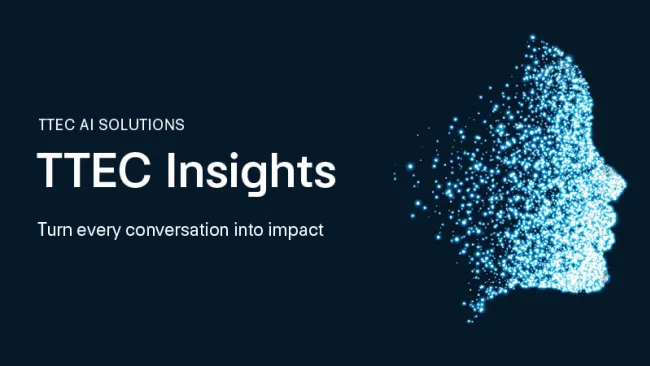Your customers are using an assortment of digital channels, including the web, mobile, and social, to learn about products, services, and brands. But is your marketing team taking the steps necessary to deliver engaging and relevant digital experiences for your customers?
Thirty-six percent of industry executives surveyed by Accenture point to exploiting the potential of digital channels among their top challenges while 34 percent express concern about having adequate skills and resources to support digital deployments.
Here are 10 best practices that can help companies achieve digital marketing nirvana:
1. Adopt multi-device targeting capabilities. Companies that use multiple retargeting partners should plan to tag content with a third-party tag and a partner’s tag to ensure that retargeting efforts can be tracked. All retargeting partners should be held to a goal or a target such as the quality of the traffic being generated. Also, be sure to determine which attribution model works best and ensure that partners have the ability to remove a customer from the retargeting pool if they’ve already made a purchase.
2. Connect cross-channel data. Cross-channel data integration ensures that marketing campaigns are properly coordinated. Doing so will also certify that the strategy has been successfully deployed across each of the affected channels and that ROI is being achieved across each of the channels. Connecting and analyzing cross-channel data can also help to ensure that there’s consistency between marketing campaigns delivered in individual channels.
3. Adopt next-generation SEO. Search capabilities continue to get stronger. In fact, search has already extended to voice as a growing number of customers use their mobile devices to conduct voice-activated searches. Although few organizations do this now, those companies that combine their search and data strategies together position themselves to better meet their revenue targets by gaining a more complete picture of their customers. Advanced search capabilities that are emerging on digital media, like setting up advanced Twitter search streams and web search optimization that’s tailored to a specific geography, are providing sales and marketing teams with an abundance of data that was previously unavailable.
4. Measure campaigns based on ROI, not just rankings. While the ability to measure digital traffic is important, ultimately the end goal is the capacity to understand the media mix and attribution model to ascertain customer purchasing ROI. Sales and marketing leaders need a measurement and review process in place for each channel along with capabilities for recognizing the impact of various media on purchasing decisions.
5. Trade Keyword Frequency for Latent Semantic Indexing. Latent Semantic Indexing is a key component in how search engines understand the “context” of a website’s content. It’s based on the co-occurrence clustering of words and the association of documents based on the occurrence data. Translation: the search engines essentially learn what a website’s words mean based on the other words around them. With the old school keyword frequency and density optimization technique, SEO campaigns reached diminishing returns in terms of maximizing traffic since they only focused on one keyword. In comparison, custom LSI tables maximize the traffic opportunities from the resulting keyword combinations and permutations and thereby create much more targeted traffic and therefore a higher campaign ROI.
6. Build rich customer profiles. A robust customer profile that includes search information will provide sales and marketing teams the insights needed to predict and determine a customer’s future needs. For instance, a customer who just booked a vacation online can be prompted if he didn’t purchase travel insurance. Personalizing the message and providing relevant insights as to why travel insurance would be advisable for that destination will increase the likelihood of conversion.
7. Map out customer buying journeys. The average customer engages more than 10 times before making either an online or offline purchase. Knowing the path to purchase that key customer personas take increases the potential for marketers to connect with those customers in the most relevant way through the right channel at the right time. It also enables sales and marketing leaders to identify how and in what channel a customer first became interested in a brand, how he interacted with search and display, and the factors that led the customer to convert.
8. Align sales and marketing. There are numerous reasons why sales and marketing should be more closely integrated and aligned, but the chief motive is to line up sales objectives, namely, improvements in lead generation with marketing efforts. Lead nurturing is an important mission for marketing, and companies that are able to break the barriers that separate sales and marketing will have greater success achieving their business objectives.
9. Look beyond the last click. Forward-thinking marketers have moved past a last-click mentality and are instead embracing customer attribution models to grow their businesses and drive greater ROI. Appropriate attribution–assigning value to all elements in the mix that have an impact on acquiring a customer–can enable marketers to gain a deeper understanding about the key factors that drive engagement, influence the sale, and the elements in the media mix that deliver ROI.
10. Optimize content campaigns. Customers are now driving the conversation. Because of this, it’s critical for business leaders to engage with customers on their terms by understanding their behaviors and then reach out with relevant information that’s targeted to an individual customer’s needs.
A one-size fits all approach to marketing no longer cuts it. Today’s customers expect personalized and customized conversations that are based on their needs and information that they’ve already provided to move the discussion forward. Only then will companies achieve marketing nirvana.
Also, check out the most recent issue of our eNewsletter.
Related Content:
Blog Post: Search, Display Lead Marketing’s Digital Transformation
Article: Top Considerations for Mastering Digital Marketing ROI
White Paper: Better Sales Leads and Conversion Rates in a 360-Degree World
Ten Best Practices for Digital Marketing Nirvana















